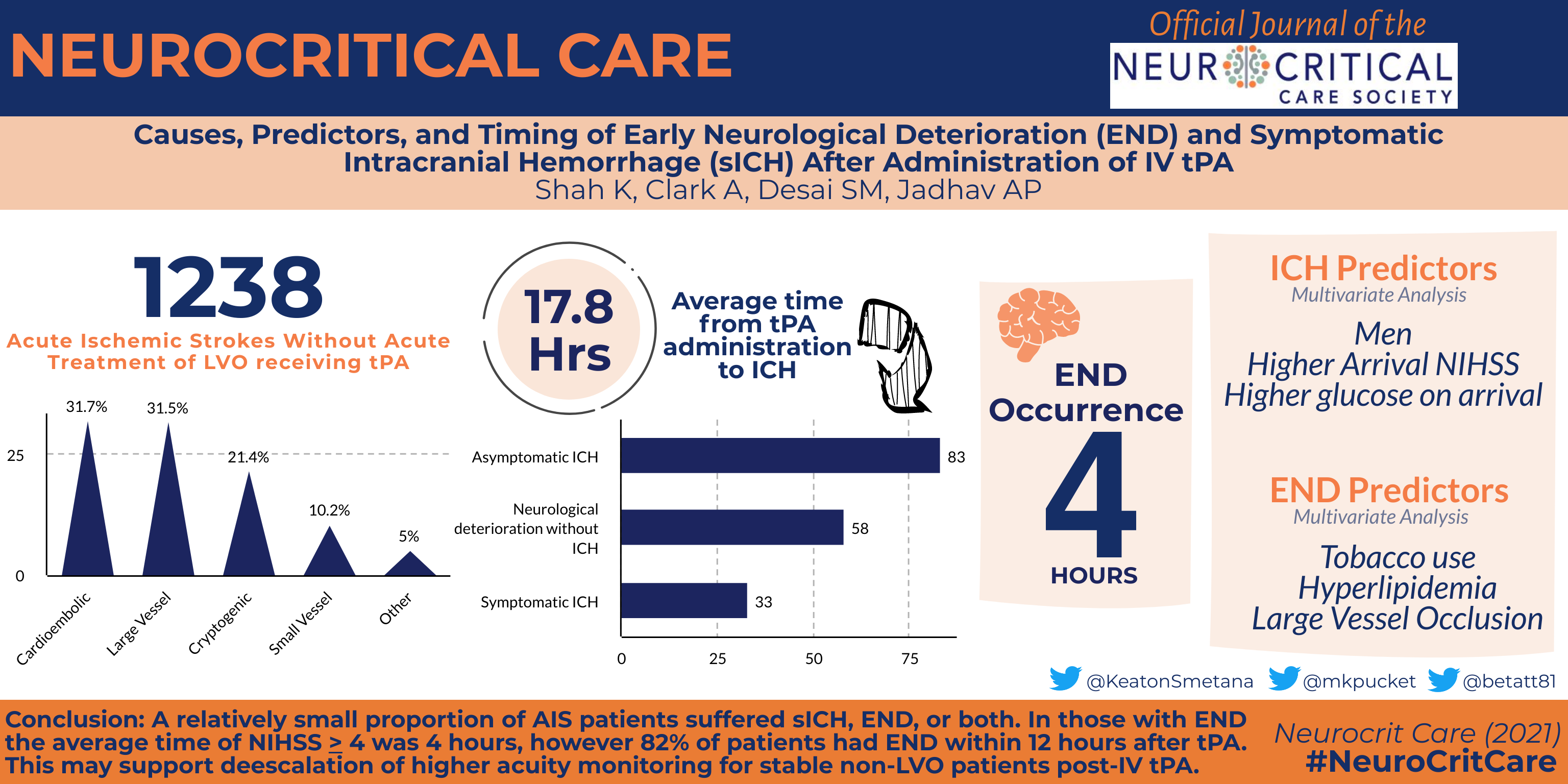By: Kavit Shah, Alexander Clark, Shashvat M. Desai & Ashutosh P. Jadhav
Published: 06 July 2021
Background

Acute ischemic stroke (AIS) is a major contributor toward healthcare-associated costs and services. Symptomatic
intracranial hemorrhage (sICH) and early neurologic decline (END), defined as a National Health Institute Stroke
Scale score decline of ≥ 4 within 24 h (with or without sICH), remain major concerns when
administering intravenous tissue plasminogen activator (IV tPA) despite improved functional neurologic outcomes with
its use. Given these risks, current guidelines recommend comprehensive stroke care (most often in an intensive care
unit setting) for 24 h posttreatment. However, a number of patients may remain stable after IV tPA and thus not
require such intensive resources. We sought to determine causes of END, along with timing and predictors of both
sICH and END, to identify patients at lower risk of neurological deterioration and those suitable for earlier
transition to a lower level of care.
Methods
This present study analyzed patients with AIS that presented within 4.5 h of being last seen well and received
IV tPA. Baseline demographic, clinical, and radiographic findings were collected. Outcomes included END from any
cause, parenchymal hemorrhage (PH1 or PH2), sICH, and mortality at 90 days.
Read the full
article.